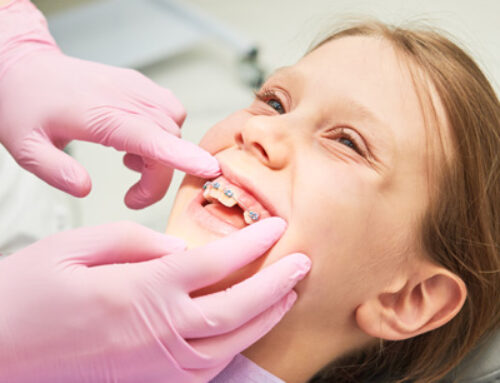“TMJ” is short for temporomandibular joint. These small yet complex joints are located in front of your ears and attach your jawbone to your skull. Any problems with your temporomandibular joints can affect the muscles and nerves throughout your face.
Symptoms of a TMJ disorder include: headaches, facial pain, tenderness, swelling, and difficulty chewing. You may also experience your jaw locking or freezing in place, either while opened or closed. When chewing or moving your jaw, you may feel or hear clicking, popping, or grating sensations.
TMJ disorders are relatively common. The National Institute of Health estimates that 10 million Americans experience TMJ problems and more women are affected than men. The good news is, there are many treatments available today.
What causes TMJ disorders?
There are many causes of TMJ disorders and you may have more than one contributing factor. TMJ problems can come on suddenly, after an injury or other impact to the joint. For other people, a disorder develops over time due to arthritis or other erosion to the joint.
For some people, their lifestyle and habits play a role. The way woodwind and brass musicians must position their mouths can lead to wear and tear on their temporomandibular joints. Some people clench or grind their teeth while sleeping or when feeling stressed.
And yet for others, orthodontic problems are contributing to their TMJ pain. For example, when a person’s top and bottom teeth do not line up properly, this can put additional strain on the jaw.
How an orthodontist can help with diagnosis & treatment
Diagnosis
An orthodontist is uniquely qualified to help diagnose and treat your TMJ problems. First, they will do an exam, ask you questions about your symptoms, and possibly get dental X-rays.
You may also need a CT scan, an MRI, or arthroscopic surgery to fully diagnose your TMJ disorder. When necessary, your orthodontist will refer you to other specialists who will partner together in your care.
Treatments
Treatments vary, depending on the severity and the causes of your TMJ problems. More than one treatment may be needed to correct the problem and provide you with pain relief. Home remedies can include eating softer food and applying ice or moist heat packs.
If your orthodontist finds that your teeth are misaligned, two potential treatments are braces and/or occlusal adjustment. You are probably familiar with metal braces, but there are more discrete options on the market today, including clear braces and braces worn on the inside of the teeth. An occlusal adjustment involves reshaping a tooth or multiple teeth to create a straighter bite.
Pain medication, a night guard to reduce teeth grinding, and learning to relax your facial muscles may also be part of your treatment plan. Some patients benefit from physical therapy, massage, or acupuncture. In some cases, either arthroscopic or open joint surgery is needed to best treat a TMJ disorder.
Unlike many other medical conditions, there is not a universal treatment for TMJ disorders. If you know someone else who has had TMJ problems, your treatment plan may look different from theirs.
Contact Clemente Orthodontics today
It is important to treat TMJ disorders promptly, as the symptoms interfere with your daily life. Over time, difficulty chewing can lead to malnutrition and affect your overall health. Chronic pain and headaches can interrupt your ability to get a good night’s sleep, be productive at work, and enjoy time with your family.
You don’t have to live through another day of jaw pain and discomfort. If you are experiencing TMJ symptoms, contact Clemente Orthodontics today. Your orthodontist will come up with a treatment plan that is tailored just for you and your lifestyle.

Medically reviewed by:
The Orthodontic Team at Clemente Orthodontics
July 15, 2024
At Clemente Orthodontics our expert dental team takes great care in providing orthodontic treatment and Invisalign solutions for our patients.






